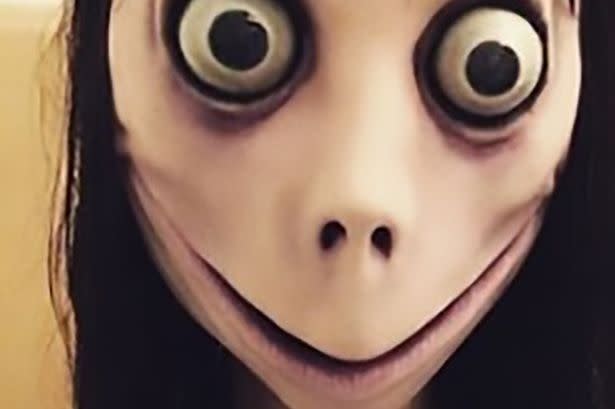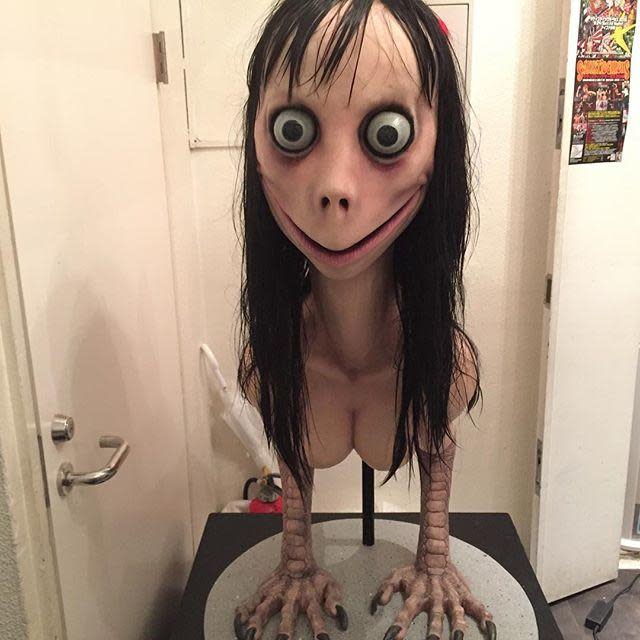'Momo challenge' branded a hoax by cyber expert

A cyber expert has branded the recent online craze ‘Momo challenge’ as a hoax.
Dr Dawn Branley-Bell, a cyberpsychologist from Northumbria University, told Yahoo News UK: “I believe that the Momo challenge is largely an urban myth or online hoax.
“This is the latest ‘hot topic’ which is spreading like wildfire due to its sensationalist nature and is causing a lot of parents to be unnecessarily worried.”
The Momo challenge allegedly entices children to add a contact into their phones and then instructs them to complete increasingly dangerous tasks in secret with the threat of harming their families if they do not comply.
The messages are often accompanied with the image of Momo, a bug-eyed, skeletal woman with a long, thin mouth and scraggly black hair.
The picture first appeared last summer when a 12-year-old girl’s suicide in Argentina was thought to have been motivated by the so-called Momo game, but no link between the two has yet been proven.
Dr Branley-Bell believes this is ‘the modern equivalent of the monster under the bed’, but acknowledges that a small number of children may have been disturbed by this.
“The sculpture was originally part of an art exhibition in Tokyo and had absolutely nothing to do with any ‘challenge’ but somewhere along the line someone has started this hoax and it has spread.”

She added: “If a child is/has been affected, then we would be better focusing upon the underlying psychological reasons behind that child’s vulnerability.
“More generally, we should be focusing upon providing the younger generation with the tools they need to become resilient to online content, through education and support – including equipping them with the skills to identify hoaxes and encouraging them to become critical observers of what they see online, which would be much more beneficial than headlines and panic around extreme crazes or rumours.
READ MORE: How to safeguard your children online
“There will no doubt be another challenge that comes along, however, it is undoubtedly likely to involve an element of fear – whether that’s through the character fronting the hoax, such as the haunting imagery associated with Momo and Slenderman, and/or a fear of the consequences, i.e., the threat that something bad will happen to you or your family if you do not follow through with the challenges.
“They will continue to appear and this is why the key to addressing these issues is to raise awareness of online hoaxes without scaremongering.”
If you’re a parent of young children or teenagers, you ought to be aware of the #MomoChallenge, a game which allegedly encourages children to perform acts of self-harm via online messages received on Whatsapp and You Tube.
— Derbyshire Police (@DerbysPolice) February 26, 2019
Police around the UK have released statements acknowledging they know of the existence of this challenge and giving advice to worried parents about how best they can protect their children.
Multiple schools have also handed out letters to parents warning them about the Momo challenge and its potential dangers.
There are also concerns that the social media giants are not doing enough to prevent children from taking part or even seeing the images.
So let me get this straight @instagram you ban pics of mothers breastfeeding because they show a little nipple but THIS is ok? Nice job of helping perpetuate violence and poor mental health in our kids? I’ve only shared a screengrab as don’t want to share vid! #momochallenge #rt pic.twitter.com/Dy4FmhoDPg
— Katy Pullinger (@katyptv) February 26, 2019

 Yahoo News
Yahoo News 

